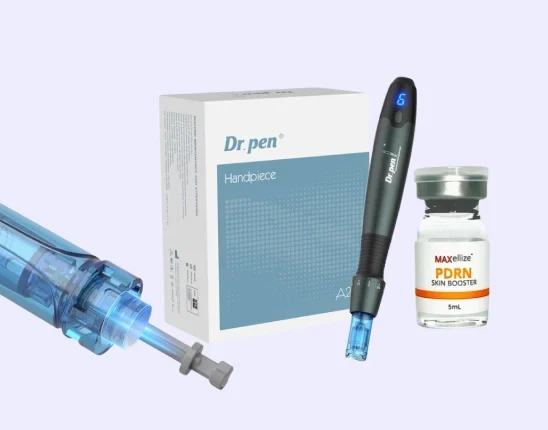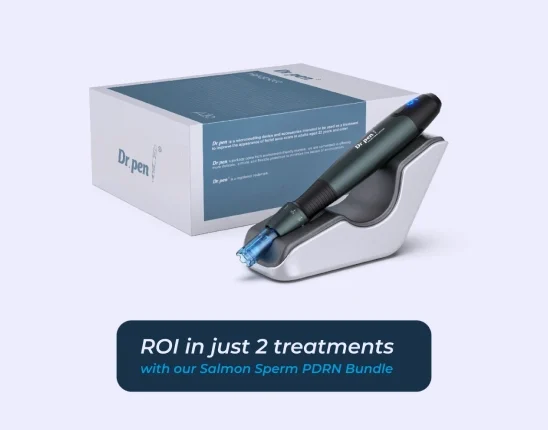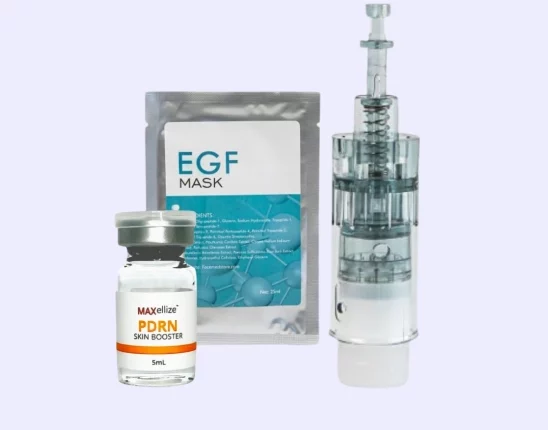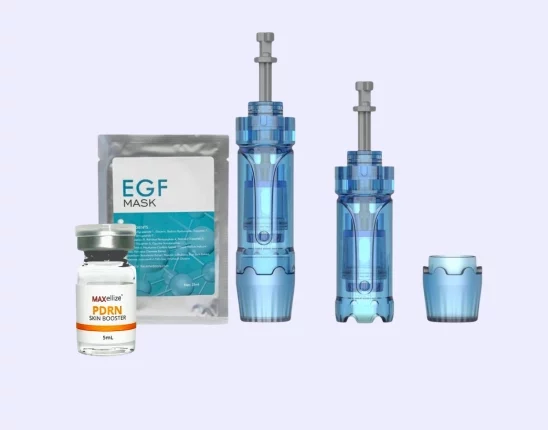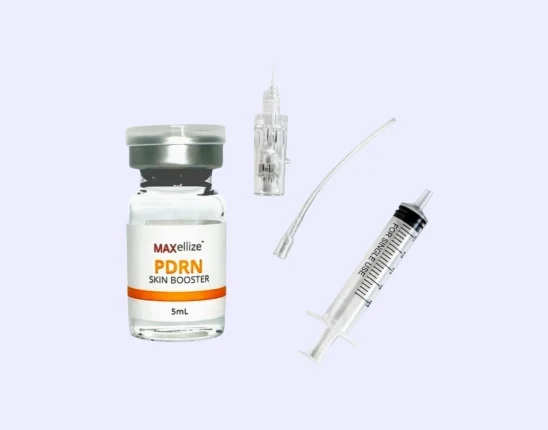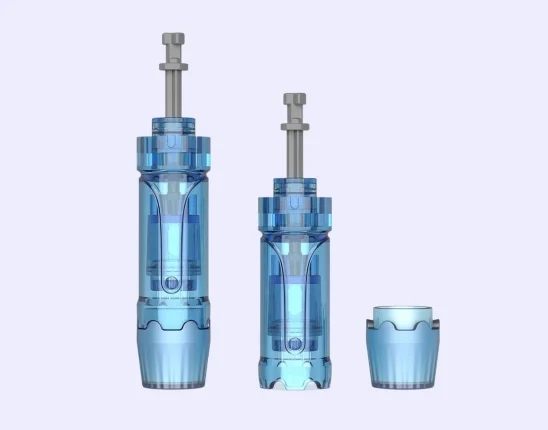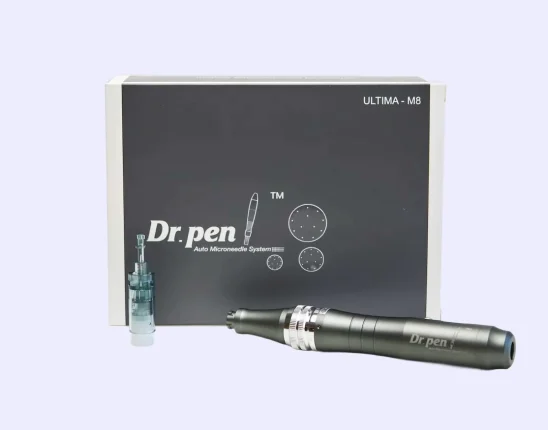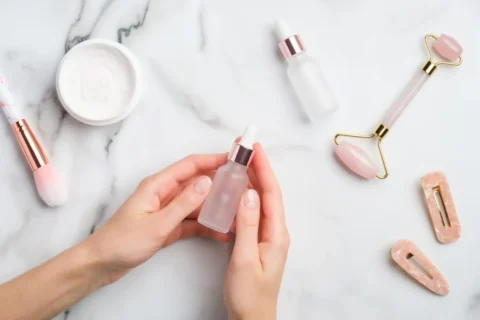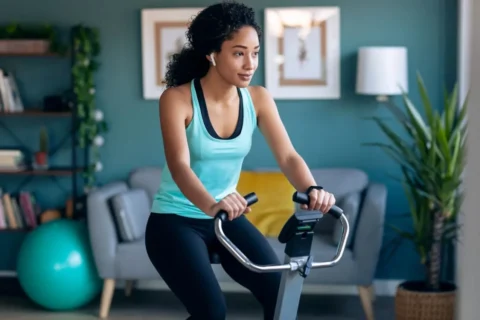Microneedling pens have quickly taken the center stage as many patients and providers use them as an easy yet reliable skin treatment procedure to manage facial lines, dark spots, shallow and deep acne scars, and a variety of other skin conditions. With the option of choosing microneedling pens that are rated for use in-clinic or at home, it can be difficult to figure out which ones to choose.
So how exactly should people judge and choose microneedling pens? Truthfully, the “best” microneedling pen is one suited to the user’s own needs, and that can easily change depending on the results that they want from their microneedling treatment. However, it’s possible to narrow down these needs and choose a microneedling pen that can fulfill them in the best possible way.

Get Everything You Need for Your Microneedling Pen and More at 20% off Your First Order with Code “20OFF”!
The Microneedling Pen treatment requires only the best equipment to deliver treatments and results your patients will love. Get your best Microneedling Pen equipment and more at FACE Med Store today!
You can create an account here.
Why Choosing A Microneedling Pen Can Be Complicated
Microneedling is a simple yet subtle way of improving anyone’s skin regardless of skin type or skin tone, but it needs to be done properly for the user to get the most out of it. While the exact way that microneedling works isn’t that complicated to understand, it’s the variety and different designs of microneedling pens that can make choosing a microneedling device difficult.
While it’s not an invasive procedure and can work on different kinds of skin, microneedling pens generally work best when they provide the results that the user wants. An expensive option is equally as valid as an economical skin treatment option depending on the results that the user wants from their microneedling sessions.
Microneedling pens generally fall under two categories:
- Professional or medical grade microneedling pens: generally designed to penetrate deeper layers of skin, used in intensive skin tightening treatments
- At-home microneedling pens: can be used by anyone to treat bad skin conditions or to make general improvements for themselves like getting rid of dull skin or having firmer skin
By figuring out which category the intended microneedling device falls under, it becomes easier for users to narrow down exactly what they need from a microneedling pen, and to find their ideal device for their use.
Factors To Consider For In-Clinic Microneedling Pens

Professional grade microneedling pens are rarely (if at all) used by anyone who doesn’t have the license to conduct medical microneedling. As a result, they’re often more expensive and only released to licensed professionals like plastic surgeons or dermatologists. Most of the time these microneedling pens can be found in the clinics of cosmetic providers.
Here are factors that providers should keep in mind when picking out microneedling pens:
Product Features vs Intended Goal
One thing that makes microneedling a flexible way to treat most skin conditions is that the science of how it works is relatively simple. This means that for most medical-grade microneedling pens, the issue becomes less of “can it do this” and “how can it do this better?” This is where the question of features comes in.
There are plenty of microneedle pens that come with their own set of features like disposable cartridges, digital displays, larger needles, or extra needle tips, but providers need to ask themselves more routine questions, like:
- Are the staff properly trained in using this microneedling pen?
- If not, how much will training cost?
- Does it have the basic features needed for a microneedling pen to function well?
- What makes this model better than the one competitors are using?
- Will the use of this device make microneedling treatments easier for the clinic to do?
Sometimes, a device may seem great on paper but fail to integrate with the routine in the clinic or cosmetic practice, or simply be unwieldy and difficult to use in hard-to-reach areas. Effective treatment with microneedling doesn’t always mean that providers should look for the one that’s stuffed with the most features: rather, they should understand why they’re looking to use a microneedling machine.
Fortunately, the barrier for entry for learning how to operate micro needling machines is quite low. Features like adjustable needle depth, digital LED display, or cordless device options are now ubiquitous with most manufacturers, though it’s important to stress that depending on how often routine treatments are in the clinic, these needs may change.
Overall Costs
The associated costs with setting up, maintaining, and ultimately integrating a microneedling pen into a clinic or practice may not seem so much early on, but depending on the size of the practice and the frequency that it does microneedling, these costs add up over time. While it’s possible to get bargains on things like disposable needles and needle cartridges with the initial purchase, a provider has to think about what else could buying a microneedling pen cost them.
One of the most overlooked costs with buying a microneedling machine is how much return on investment it will cost compared to other series of treatments that a practice may already have. Skin tightening treatments like ultrasound therapy or dermal filler can also work on solving skin laxity – and in some cases is far more effective on issues like frown lines and hair loss treatment.
A practice should always ask itself if the derma solution that they’re looking for really requires a microneedling pen to work since it is a significant and upfront investment. While there is a high likelihood that any purchase of professional microneedling devices will be of quality, there’s still the question of it being something the practice can afford.
Efficacy With The Procedure
Microneedling sessions typically last between one to two hours, depending on the surface area of the patient and how much prep work needs to be done before the procedure. The performance of the microneedling device (particularly how efficient and fast it can perform this cosmetic treatment) can make a lot of difference, primarily with how many patients can they perform the procedure on within a day.
While medical in-clinic microneedling should never be rushed, having it last for too long can also present problems of its own. Too much damage to the upper layer of the skin can make it incredibly vulnerable to active acne breakouts, increased sun damage, and an overall decrease in the production of collagen. For plenty of practices, this usually happens because the exact microneedling pen that they chose doesn’t fit with their routine.
This is even more crucial to think about if a practice is looking to replace or upgrade its current microneedling system. Even if microneedling pens all fall under the umbrella of skin rejuvenation and collagen production tools, the way each brand designs their devices – and the features they add – can have a drastic effect on how well future microneedling sessions will go.
Overall, the purchase of medical-grade microneedling pens should always be informed by the capacity of the receiving practice, their capability as a provider to perform the cosmetic procedure, and the resources they can use to make sure that the microneedling pen is used properly.
Factors To Consider For At-Home Microneedling Pens

In contrast, at-home microneedling pens don’t have to go through such strict deliberation. As they’re primarily designed to make the effects of microneedling more accessible without having to go for in-clinic treatment, at-home microneedling kits can be a little easier to purchase. However, this doesn’t mean that they aren’t without their key considerations as well.
For people looking to experience microneedling at home, these are the key factors to keep in mind:
Reputable Source And Manufacturer
Online shopping and new market entries have made the sale of microneedling kits easier and more appealing – but it also means that buyers are more likely to buy a microneedling pen that doesn’t work. Since the overall effects and technical requirements to create an at-home microneedling pen can be extremely low compared to medical-grade microneedling pens, there’s always the risk of buying a counterfeit or defective device from an unknown brand.
Anyone looking to buy a microneedling pen for their own personal use should always do their own research about the source and the manufacturer of their chosen pen. One particular area to pay attention to is not being sidetracked by the number of features that a brand can choose to pack into one pen: while speed levels, speed settings, and advanced skin puncture technology may sound appealing on paper, its easy for any company to claim these features without the need to prove it.
For the best possible experience, buyers should always consult with an actual dermatologist or plastic surgeon about their choice to buy and use a microneedling pen. Not only are they likely to get more reliable recommendations, but they also get access to support if potential side effects occur because of the treatment.
Extensive Customer Support
Since it’s unlikely that the average user of at-home microneedling pens would have established experience in the use of cosmetic devices, it’s important to pick a brand that has a dedicated customer support team for their product. This gives users an easily accessible source of information to consult with the operation of their microneedling pen.
Dedicated customer support can also help with dealing with common side effects and potential issues that a user may have with using their microneedling pen: like adjusting speeds, using it to manage active acne infections, interaction with sensitive skin, or finding the best way to use it on facial lines. While a user can always get this information with their derma or a plastic surgeon, it’s far more efficient to include support already with the tools that they’re using.
Build Quality And Longevity
A microneedling pen isn’t the most expensive cosmetic tool that anyone can buy, but it also costs a fair amount based on the brand and features. Considering that the conditions where it may be used will not always match the ideal environment for a microneedling treatment, it’s important to make sure that build quality holds up long-term.
This isn’t limited to just checking if the device can survive a few scrapes or dents – it also involves all the moving parts of the tool that make microneedling treatments possible. Adjustable needle heads, replacement cartridges, or different needle lengths need to be accessible so replacing them doesn’t become an issue.
Build quality not only guarantees that a buyer will get their money’s worth out of their purchase, but also that the quality of the results they get will stay consistent over time. Since the majority of the aftercare and maintenance of at-home microneedling will be done without direct medical supervision, ensuring that the tools used can last for a long time is the least a buyer can make sure of.
PEP Growth Factor Products: An Effective Addition To Microneedling Treatment
The variety of microneedling pens available right now is small compared to the number of treatments that patients and providers can use to boost the benefits of microneedling sessions. One product that’s seeing increasing use is PEP Growth Factor, a proprietary formula that may improve hair density and promote overall scalp health.
Made from copper peptides, essential nutrients, and fibroblast growth factors, PEP Growth Factor products are an excellent accompaniment after a micro needling cosmetic procedure. Since the microneedles make absorption of skincare products much easier, PEP Growth Factor can enter the body easily for faster results.
Since microneedling treatments can also be used on the scalp, it’s even more effective for using PEP Growth Factor products for hair growth. Collagen is an essential building block of keeping the skin healthy – so while the microneedling can affect the skin and hair growth physically, PEP products can act as a supporting treatment.
With consistent treatment from both methods, a patient may be able to enjoy the benefits of improved hair growth and healthier skin cells. Since the effects of both treatments don’t interfere with one another, they can also be used with other collagen supplements and skin rejuvenation treatments. With boosted collagen production, patients are well on their way to enjoying glowing skin.
Medical Supplies And Tools For Microneedling Treatments At FACE Medical Supply
-
 Dr. Pen A20 Replacement Needles
Dr. Pen A20 Replacement Needles -
 Dr. Pen A20 – FDA CLEARED – professional grade
Dr. Pen A20 – FDA CLEARED – professional grade -
 Dr. Pen M8 Replacement Needles – Bag of 10 PLUS 10 Maxellize PDRN Skin Booster and 10 EGF masks
Dr. Pen M8 Replacement Needles – Bag of 10 PLUS 10 Maxellize PDRN Skin Booster and 10 EGF masks -
 Dr. Pen A9 Ultima Pro Microneedling Pen Plus 5-Maxellize PDRN Skin Booster and 10 EGF Masks
Dr. Pen A9 Ultima Pro Microneedling Pen Plus 5-Maxellize PDRN Skin Booster and 10 EGF Masks -
 Microneedling Pen 2.0 Replacement Kit bundled with Maxellize PDRN Skin Booster
Microneedling Pen 2.0 Replacement Kit bundled with Maxellize PDRN Skin Booster -
 Dr. Pen A9 Replacement Needles – Bag of 10- 18 Pin Needles
Dr. Pen A9 Replacement Needles – Bag of 10- 18 Pin Needles -
 TinySoft – NanoSoft Microneedles – 34g – 3 pin – box of 30
TinySoft – NanoSoft Microneedles – 34g – 3 pin – box of 30 -
 Dr. Pen A7 replacement needles – 12 pin – 10 Pack
Dr. Pen A7 replacement needles – 12 pin – 10 Pack -
 Dr. Pen M8 plus 10-16 pin needles
Dr. Pen M8 plus 10-16 pin needles
A microneedling pen can come in different varieties: from professional microneedling devices to at-home microneedling tools that anyone can use. Both are effective methods of managing common skin issues like acne scars, open pores, or mild wrinkles – though a professional microneedling pen will always give better results. Patients and providers alike will need to carefully weigh the features, advantages, and disadvantages they want from their micro needling pen to pick the best option.
FACE Med Store has extensive experience in providing high-quality medical tools and supplies to cosmetic and medical practices, giving them access to reliable supplies at competitive prices, such as our Dr. Pen A7 Microneedling Pen With 10 Needles. Our stocks range from medical-grade needles to medical-grade skin care products for flawless skin.
To learn more about us and our stocks, contact us today.
